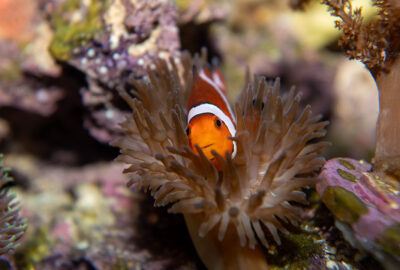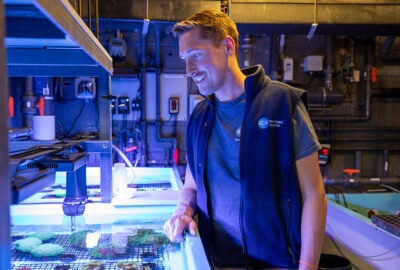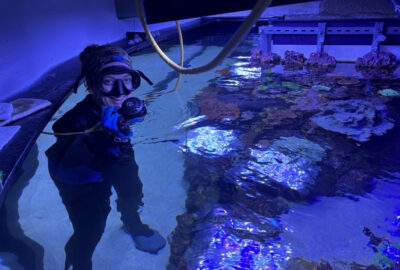A Growing Population
Meet the two new residents of our New Balance Foundation Marine Mammal Center
By New England Aquarium on Wednesday, November 29, 2023

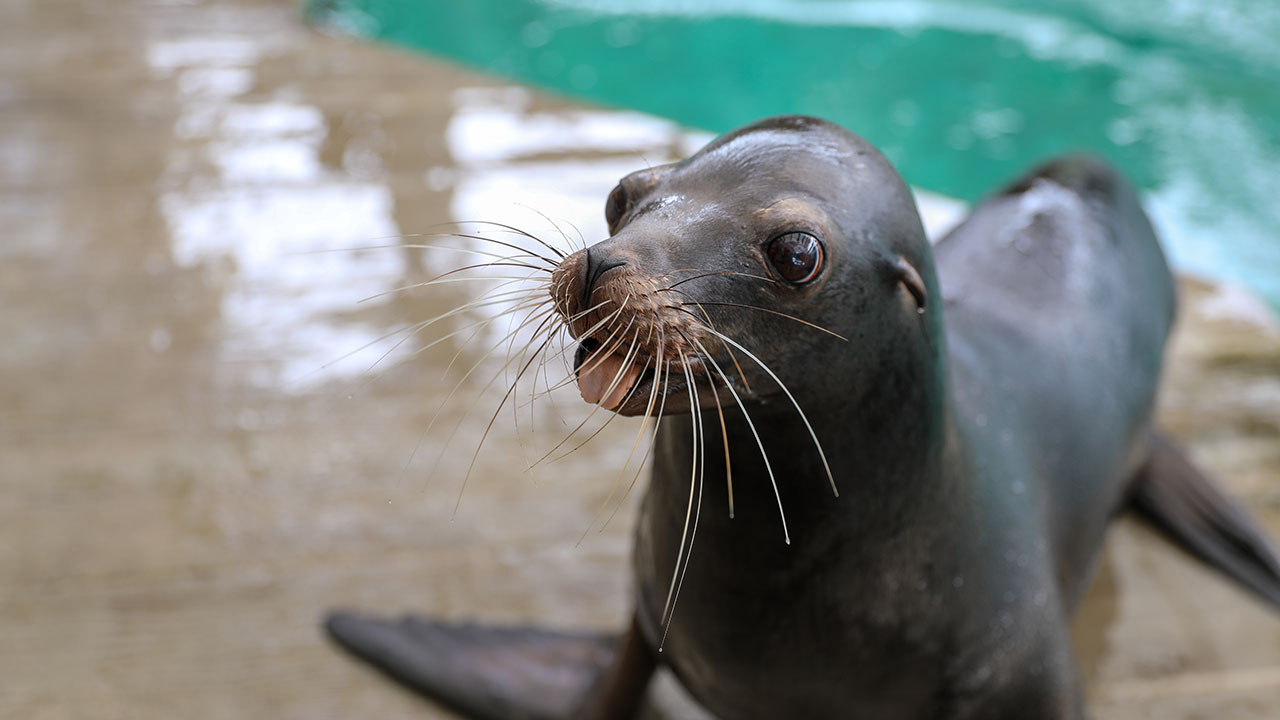
The sea lion population at the Aquarium is growing. Two new animals, Giovanni (Gio) and Farley, have traveled from Birmingham, Alabama, to Boston to join current residents Zoe, Sierra, and Tipper at the Aquarium’s New Balance Foundation Marine Mammal Center.
Both Gio and Farley were stranded off the coast of California at just a year old. They were released after rescue and rehabilitation at the Marine Mammal Center in Sausalito, California, only to be found stranded again. Due to their young age, they failed to thrive in the wild and were deemed non-releasable. After spending recent years in Birmingham, they moved to the New England Aquarium in July.
Their arrival was perfect timing. Earlier this year, our female northern fur seal Luna made the short trip south to Mystic Aquarium, where she is staying for the next few years. The hope is that while there, she will be able to breed with one of their male northern fur seals in an exciting opportunity for the aquarium community to thoughtfully increase the population of this vulnerable species.
“After Luna’s temporary departure, we set a goal of expanding our current sea lion group for increased socialization and enrichment,” explains Kristen Van Oss, curator of pinnipeds and penguins.
An opportunity presented itself for New England Aquarium to acquire Gio and Farley from the Birmigham Zoo. After thorough health checks, Gio and Farley quarantined together behind the scenes in the Marine Mammal Center for 30 days before joining the rest of the colony to ensure all of the animals remain healthy. While the two were in quarantine, staff mapped out plans for all five animals to prepare for Gio and Farley to come out onto the main exhibit.
In the wild, Van Oss says, sea lions live in colonies, and the males tend to live in a harem surrounded by females. Now, all five of the sea lions have an opportunity to live in an environment that is similar to a social grouping found in the wild.
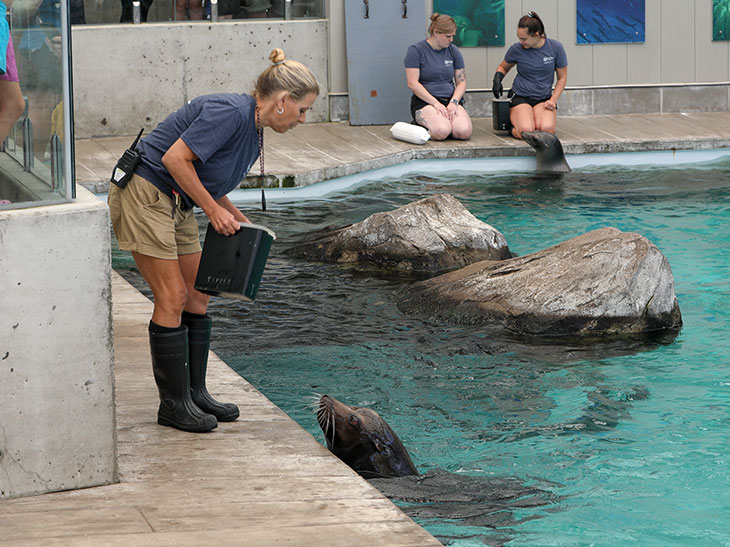
Now that Gio and Farley have been integrated, they’re continuously engaging in high-energy behaviors and
physical fitness. This helps the mental and physical well-being of these intelligent animals who, if in the wild, would constantly face challenges by competing for sustenance, being hunted as prey, searching for a mate, and more.
Gio and Farley have a well-established training repertoire and know over 140 different behaviors. Now the animals are learning how to offer these behaviors in their new environment. Sometimes this results in the need for adaptations.
“When you move animals from one environment to another, they have a context shift,” Van Oss explains. “Some behaviors learned elsewhere may automatically transfer when we communicate with verbal and hand signals and other behaviors may need to be reshaped.”
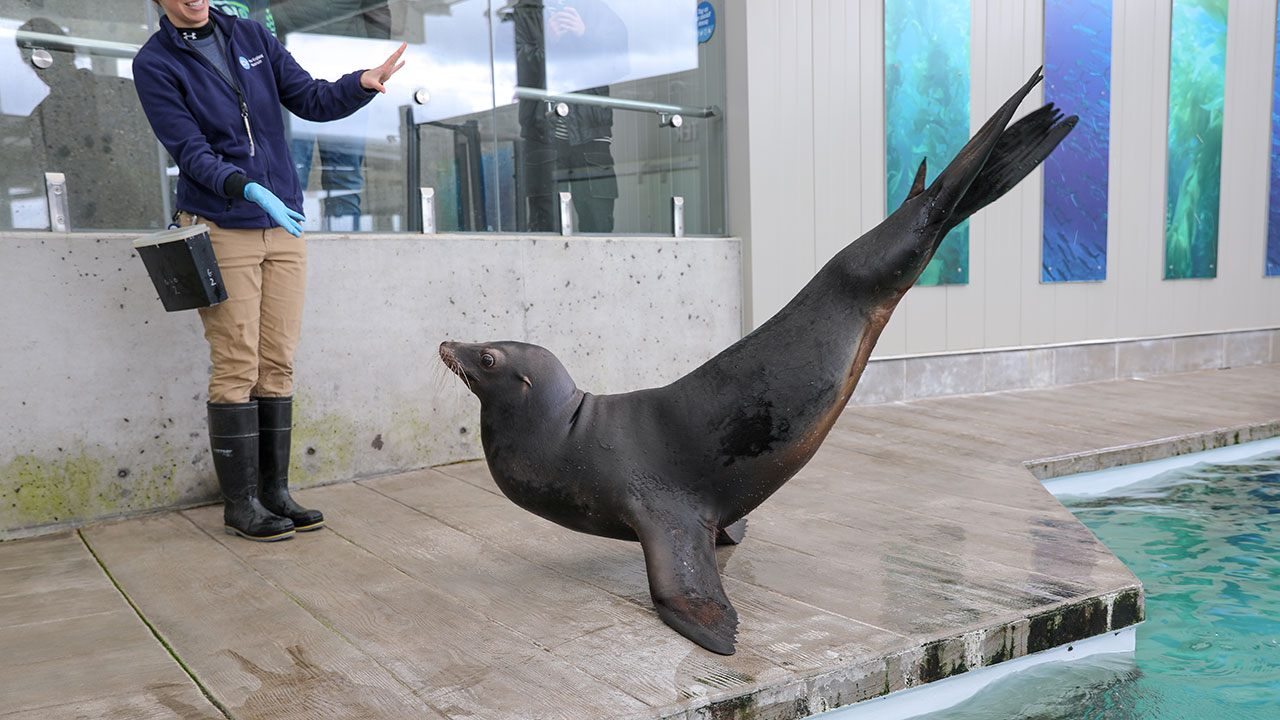
For example, if the animal can lay down on any deck space or open their mouth to allow trainers to look at their teeth, they can do that immediately. But other asks—like porpoising out of the water—require time for the animal to map out their exhibit and establish the best way to accomplish that goal. “New surroundings require different steps when asking for a more complex behavior,” Van Oss says.
“We are always looking to provide the most enriching lives possible for our animals here at the Aquarium. One of our goals with Gio and Farley is to find things they really enjoy like toys, water play, jello, or rub downs and build on that,” says Van Oss.
Enrichment plays a key role in the overall care and well-being of the animals at the Aquarium. The success of both enrichment and behaviors relies on establishing trust between trainers and the sea lions. By building these positive relationships and providing individualized care, we can ensure animals in our care thrive.
This story originally appeared in the Summer 2023 issue of blue member magazine.

